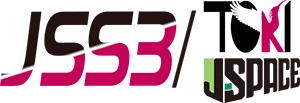Numerical analysis for optimal design of helicopter rotor blades
JAXA Supercomputer System Annual Report February 2024-January 2025
Report Number: R24EDA201C22
Subject Category: Aeronautical Technology
- Responsible Representative: Kanako Yasue, Aviation Technology Directorate, team leader, Aircraft Life-cycle Innovation Hub, Airmobility Digital Design Team
- Contact Information: Keita Kimura(kimura.keita@jaxa.jp)
- Members: Keita Kimura, Yasutada Tanabe
Abstract
As part of a joint research project among JAXA, DLR, and ONERA, efforts are underway to verify/validate helicopter blade analysis tools and optimization methods, and to accumulate knowledge. Blade shape optimization is being pursued using the HART II wind tunnel test helicopter blade as a reference. This year, with the aim of improving acoustic performance under helicopter descending flight conditions and reducing BVI noise, CFD analyses have been carried out for blade design. In helicopter acoustic analysis, accurately resolving the tip vortices generated by the blade is crucial, necessitating high-resolution fluid simulations. Moreover, conducting analyses that account for elastic deformation makes it possible to capture the mutual interference between the blade and the tip vortices more accurately. This report illustrates an example of an acoustic analysis that incorporates elastic deformation.
Reference URL
N/A
Reasons and benefits of using JAXA Supercomputer System
In CFD-based optimization, a large number of cases with several design variables need to be performed in the CFD analysis, and the use of a supercomputer is essential; DLR/ONERA is conducting a similar HPC-based optimization, and comparison and study using results obtained using a supercomputer is appropriate.
Achievements of the Year
Figure 1 shows the azimuthal history of elastic deformation (flap/lead-lag/torsion) for the reference blade under descending flight conditions. The deformation history obtained from the wind tunnel test is also included, and it can be confirmed that the elastic deformation trends are in good agreement.
Figure 2 illustrates the acoustic carpet for the reference blade obtained from a CFD/CSD analysis that takes elastic deformation into account. The rotor plane is represented by a circle, with regions of high sound pressure level shown in red and low levels in blue. Comparing the three analysis results under different descent angles, which denote the angle between the rotor plane and the flight direction, reveals that as the descent angle increases, blade-vortex interaction intensifies, leading to higher noise levels.
Publications
- Oral Presentations
Gunther Wilke, Joelle Bailly., Yves Delrieux., Keita Kimura and Yasutada Tanabe, "JAXA-ONERA-DLR Cooperation: Results From Acoustic Optimizations Of A Rotor In Descent Flight," 50th European Rotorcraft Forum, September 10th 2024, Marseille, France
Usage of JSS
Computational Information
- Process Parallelization Methods: N/A
- Thread Parallelization Methods: OpenMP
- Number of Processes: 1
- Elapsed Time per Case: 100 Hour(s)
JSS3 Resources Used
Fraction of Usage in Total Resources*1(%): 0.17
Details
Please refer to System Configuration of JSS3 for the system configuration and major specifications of JSS3.
| System Name | CPU Resources Used(Core x Hours) | Fraction of Usage*2(%) |
|---|---|---|
| TOKI-SORA | 777430.48 | 0.04 |
| TOKI-ST | 850811.89 | 0.87 |
| TOKI-GP | 0.00 | 0.00 |
| TOKI-XM | 0.00 | 0.00 |
| TOKI-LM | 0.00 | 0.00 |
| TOKI-TST | 289813.40 | 5.21 |
| TOKI-TGP | 0.00 | 0.00 |
| TOKI-TLM | 0.00 | 0.00 |
| File System Name | Storage Assigned(GiB) | Fraction of Usage*2(%) |
|---|---|---|
| /home | 1061.69 | 0.72 |
| /data and /data2 | 105216.29 | 0.50 |
| /ssd | 31106.15 | 1.67 |
| Archiver Name | Storage Used(TiB) | Fraction of Usage*2(%) |
|---|---|---|
| J-SPACE | 0.00 | 0.00 |
*1: Fraction of Usage in Total Resources: Weighted average of three resource types (Computing, File System, and Archiver).
*2: Fraction of Usage:Percentage of usage relative to each resource used in one year.
ISV Software Licenses Used
| ISV Software Licenses Used(Hours) | Fraction of Usage*2(%) | |
|---|---|---|
| ISV Software Licenses(Total) | 0.00 | 0.00 |
*2: Fraction of Usage:Percentage of usage relative to each resource used in one year.
JAXA Supercomputer System Annual Report February 2024-January 2025




